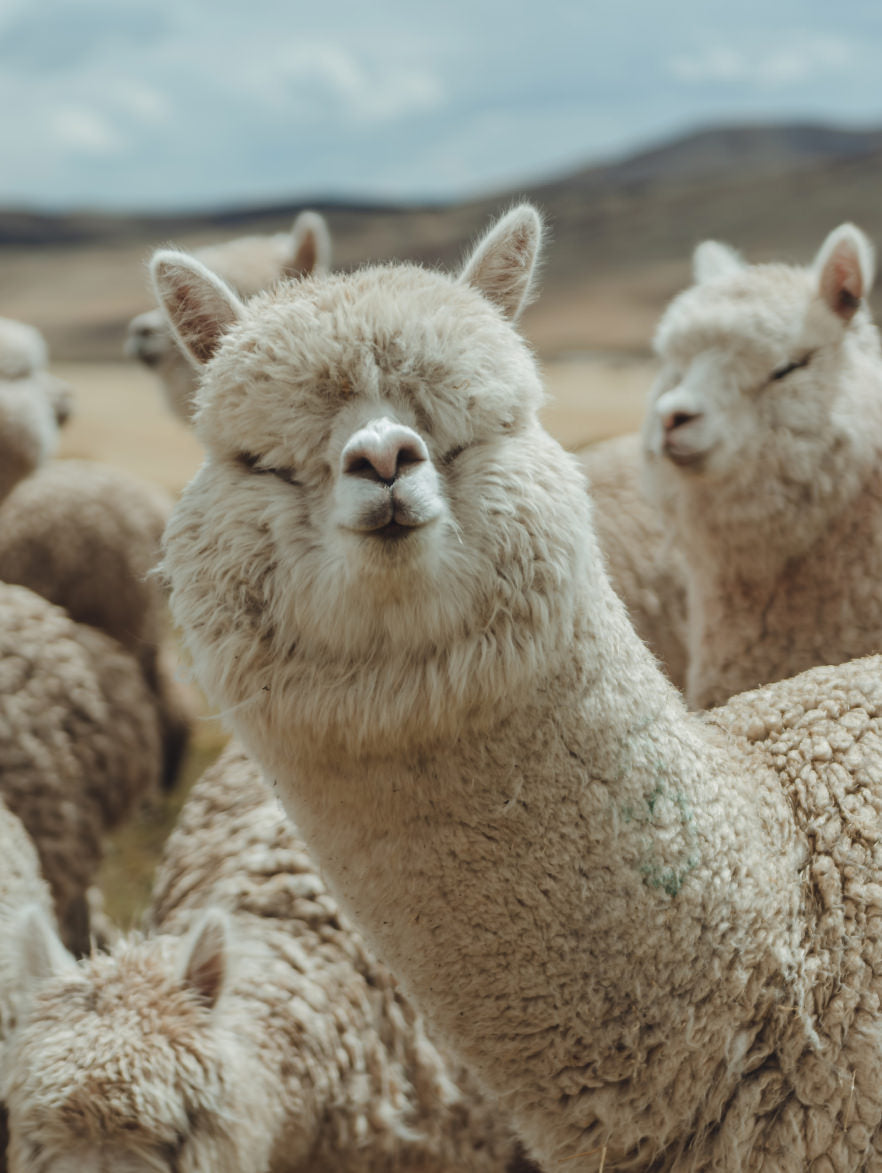



For all Paka customers, every sweater we make carries a unique mark of connection - the Inca ID, a small, intricately patterned patch on the hem, woven with centuries-old expertise by the Quechua women of Peru. Since 2017, through our partnership with local non-profit CTTC, we've employed over 100 Quechua women at four times the family living wage. We’ve expanded upon that support and are working to preserve these practices with the release of our Quechua bracelet packs, bridging a gap between Peru and our community with 100% of all profits going directly to the weavers who craft them.




Ancient Knowledge Woven in Threads
Our relationship with these Quechua weavers has threaded a bond to bridge our two hemispheres. These bracelets are an effort to fortify and preserve their age-old weaving practices - each pack of bracelets is unique to the Andean community of weavers it comes from.
With the addition of a compostable sliding bead made from corn, and the vibrant, nature-inspired color palettes chosen alongside the weavers, these bracelets represent our core commitments to preserving Peruvian craftsmanship and working alongside nature.
From Paka's beginning, we've intertwined our pieces with the Quechua women's traditional woven fajas or “Inca IDs”. Handwoven with naturally dyed threads, these fajas are the foundation of Quechuan textile skills, learned from the elders and passed down through generations.
"Watching our grandparents and mothers make their clothes, we craved it. They gave us simpler tasks and smaller fabrics, but as we grew older, we learned more designs.”
- Asunta Suta Puma, weaver from Chahuaytiri




"Watching our grandparents and mothers make their clothes, we craved it. They gave us simpler tasks and smaller fabrics, but as we grew older, we learned more designs.”
- Asunta Suta Puma, weaver from Chahuaytiri


Each design, symbolic of Quechua history and environment, is a generational heirloom. Noemi Mamani Puma from the Tauca community explains, “All these designs represent our work, and everything we see, from the stars to the lagoons. Just as our grandparents observed their surroundings and represented them in designs, we do the same."





Preserving Peruvian Heritage
Sabina Ojeda Champi of the Patabamba community reflects, “Our grandparents who taught us these designs are gone. It's now up to us to teach our children so that these designs can endure.” From harvesting raw materials to weaving them into unique patterns, these skills have been transferred from the Inca through generations.
“In these modern times, when ready-made clothes are easily available, we can easily forget our designs and handmade clothes. But we have relearned and remembered all those designs that we were slowly forgetting," says Ojeda Champi.
The Quechua Bracelets
Each 3-Pack of Quechua bracelets celebrates not just the craftsmanship but also the diverse stories of various Peruvian communities. These unique narratives, handed down from generation to generation, serve as the core design inspiration for each collection of bracelets. In the highlands of Tauca, the essence of Pacha – the earth – permeates every aspect of life. This spiritual connection is reflected in the Tauca bracelet designs. The “Kuti,” a traditional tool for cultivating potatoes, symbolizes the community's close relationship with the earth and their ancestral agricultural practices. The challaypu, their word for the tranquil lagoons scattered across the highlands, represents the community's deep reverence for water sources and their role in sustaining life. Lastly, the Mayo Q’enqo, inspired by the riveting flow of the local river, stands for life's continual flow and the community's adaptability.


Tauca weavers outside Chinchero


Traveling from Tauca to the picturesque community of Chahuaytiri, the narrative changes but the thread of cultural richness remains. Here, the weavers have chosen to honor the Nawi or 'eye' in their design. This represents not just the physical act of seeing, but an ancestral wisdom that beholds the world with deeper understanding and insight. The 'eye' signifies a philosophy that everything in life is interconnected and observable, enhancing their bond with nature and the cosmos.


Chahuaytiri Weavers outside Pisac


Further in the heart of the Andes, in Patabamba, the narrative takes flight. The artisans here breathe life into the symbol of Tankayllu, the Andean fly known as the Tankachurucha. This creature, often overlooked in its simplicity, is in fact a vital part of the Andean ecosystem. By choosing to weave the image of this fly into their bracelets, the Patabamba weavers remind us of the importance of every creature in the cycle of life.


Patabamba Weavers


These narratives, deeply intertwined with nature, are meticulously woven into the Quechua bracelets. Each thread represents an element of the Inca history, a heritage that binds the past, present, and future, bridging the physical and spiritual worlds. Every bracelet is a piece of art, meticulously handwoven and echoing the colors of the Andean landscapes. But they're more than just accessories. They’re threads of empowerment, as 100% of the profits go back to the women who create them, supporting their livelihoods, ancient techniques, and the continuity of their cultural heritage. Each purchase weaves a path of change, because your support enables these women to provide for their families, educate their children, and invest in their futures, all through something as simple as a bracelet.

Join the herd.
We grant our community private access to new products and exclusive offers.







